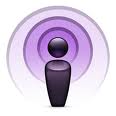 One of the issues I’ve encountered as I produce and host a new weekly public radio series all about the art of singing, VoiceBox, is the confusion surrounding the term ‘podcast’. To most listeners, it seems, a podcast version of VoiceBox means making the entire show available for download for free, 24-7 via iTunes.
One of the issues I’ve encountered as I produce and host a new weekly public radio series all about the art of singing, VoiceBox, is the confusion surrounding the term ‘podcast’. To most listeners, it seems, a podcast version of VoiceBox means making the entire show available for download for free, 24-7 via iTunes.
But like most public radio shows operating under limited public radio music usability right agreements, allowing the content of a full hour-long show to be available in its entirety on demand is not legally possible.
Different programs get around the issue in assorted ways. The Thistle and Shamrock’s “Thistlecast” podcast, for example, plays snippets of content from the upcoming show to whet listeners’ appetites. The VoiceBox podcast is a completely different beast: created in collaboration with two San Francisco State University students, the “VoiceBox: The B Sides” podcasts feature chat and music clips that take an “underground” view of the radio show topic. The idea is to give the theme of the week a slightly different spin and reach out to a younger audience.
Many listeners have been confused about this though. They think they’re getting the radio show that I produce when they click on the podcast link. The muddle is only exacerbated by the fact that the KALW website now allows the radio show to be streamed on demand for an entire week after its original airdate which means that people can in fact listen to the original radio content even if only for a few days in addition to downloading the podcast.
The issue points to the complex relationship between traditional radio and digital formats. Terms like “webstream”, “on demand” and “downloadable” are all so samey. Yet they mean distinct things. Education seems to be the best way to get people to understand the difference. This is going to take some time, however.
